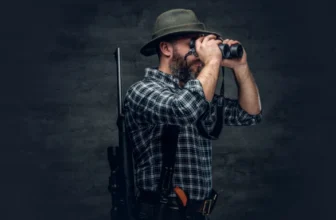The winter season is here and with it comes the cold, snow, and ice that makes for beautiful winter landscapes and tons of winter sports fun, or it can turn into a very dangerous situation. Your planning and preparedness determine which happens.
A Cautionary Tale
The story below tells of a couple in Alberta that struck out for a small adventure, but mother nature offered up more than they were ready for. While they weren’t fully prepared for this trip, they did have some basic gear to stay warm and did a good job of signaling their distress. After that story, we’ll detail a better approach to winter adventures and suggest gear that will keep you safe and comfortable.
Missing pair found in B.C.’s backcountry after writing ‘help’ in snow
Search and rescuers spotted the makeshift SOS sign from aircraft.

Missing pair found in B.C.’s backcountry after writing ‘help’ in snow
Two people reported missing in B.C.’s backcountry were found safe Thursday afternoon thanks to an SOS message they carved in the snow, which was spotted by a rescue aircraft.
Catherine Gibbons, 22, and Damon Brodeur, 24, spent five nights in the cold of B.C.’s Columbia Valley in southeastern B.C. after their car-camping trip went awry.
Steve Talsma, search manager with Columbia Valley Search and Rescue, said the pair took crucial steps that helped them be found.
“They put out an orange tarp, or blanket, and had written ‘help’ in the snow and also drew an arrow to where they were,” Talsma said.
Their vehicle, a silver SUV with a roof rack, could also be seen from above by a rescue aircraft.
Winning Quote: “Making sure that people are aware of your plans and intentions and when you expect to be back might shorten the time frame [for a rescue],” he said.
A Better Approach
To avoid making news and freezing your buns off, you can make smarter decisions before venturing into the wilds during winter. We’ll detail the techniques needed, and you can see some gear needed for happy winter adventures at our site. https://www.sidetrek.co/13-tips-on-how-not-to-die-in-the-snow/
Pick Your Adventure
Pick an adventure that is sized to your capabilities. Know the limitations of your vehicle, gear, and yourself and match that with the terrain and weather. Mountain environments in the winter can be especially tricky as the weather changes quickly and can quickly get you in trouble. It’s great to push yourself, but only if you are prepared.
Plan

Plan
Get out a map, Google, Gaia, or paper and plot your course. Know where you are going to go and share that with someone who will check in on you. If you don’t come back home, then responders have a decent idea of where you might be. Planning will also give you a better idea of what you are getting into, how far you can make it, and a better understanding of the terrain and solutions if trails become impassable. With all the great mapping software, there is no excuse to not map your route.
Stepping up your sharing capabilities, a GPS texting service is a good purchase if you spend much time well on the grid. If the stuff hits the fan you can call for help and provide your exact coordinates. HAM radio is also a great way to communicate when off-grid. HAM has a much better range and capabilities than CB, but it requires a license for normal communication (emergency comms doesn’t require a license. Learn more about HAM and licensing here.
Prepare
Going out in the wild requires some decent prep. The more challenging your adventure, the more important it to prepare. Winter is a more extreme situation and the cold can kill you. If you take it seriously and are prepared, it can be a blast. If just winging it, you can become a statistic.
Don’t Get Stuck

Don’t Get Stuck
- High Clearance- If weather predicts snow, make sure you have a vehicle with clearance to get over the snow. Even if you have snow tires and 4-wheel drive, being bottomed out on snow will halt progress. If a foot or more of snow is expected, most sedans and typical SUVs will not cut it.
- Tire Chains- The best of snow or mud tires can be overwhelmed by deep snow. Tire chains take deep snow traction to a whole new level, as they bite into the snow and ice in a way that rubber just can do. I like the variety that has chains going both across the tread and along the diameter, which will give you more grip on side slopes.
Get Unstuck

Get Unstuck
- Traction Boards- Good traction boards are a lifesaver, especially when you drop into a ditch. They provide traction and spread the load over the snow. They can also be used as a shovel on powdery snow. Place them in front of your tire and wedge in as much as possible and then drive over them. Repeat as needed.
- Shovel- If you get really bogged down or slide into a ditch, you’ll need to dig out and clear a path. A shovel is also useful for clearing spots at camp and as an impromptu sled.
- Recovery rope (with a friend) or a winch (if running solo).
Stay Warm

Stay Warm
- Clothing- NO COTTON!! Cotton gets wet and cold and won’t dry out quickly. Use wool and synthetics that wick and dry to stay warm. Use layers, so you can control insulation levels and choose the right function for each. Wicking base layer, insulating mid-layer, and weather (wind & water) proof outer shell.
- Blankets- I always keep at least one thick, warm blanket in the car. Pair that with a Mylar blanket or tarp, and you have a great combo that both insulates and reflects radiant heat back. Mylar can also be used to reflect heat from a fire towards your seating area or tent.
- Backup- If the temps go sub-zero, or you get wet, it’s a great idea to have an active heat source. The heater in your vehicle is an option for quick heat up, but for overnight, you’ll want either chemical hand warmers for a boost, an electric blanket with a battery setup, or a propane catalytic heater (this is last resort, as they could potentially cause fire or CO2 poisoning.
Stay Hydrated & Fueled
- Water- It is very easy to get dehydrated in the winter. Dry air and sweating from being overdressed can dehydrate you quickly. Yous should have 1 gallon per person, per day. Yous should also have at least two gallons for your vehicle, as it is very possible to overheat in the cold.
It’s wise to always have a water filter and means of melting snow to source local water. See below for a couple of options. - Food- You burn tons of calories working in the cold, some to stay warm and more to deal with heavy clothing and trudging through the snow. Make sure you have plenty of food including some calorie-dense emergency rations or bars stashed in your vehicle, go bag and/or first aid kit.
Have fun!
Winter is an amazing time to be outdoors, there are so many sports to try (skiing, snowshoeing, cross-country) and such amazing beauty. When prepared, you can focus on having fun and enjoying the best of the winter wonderland.







